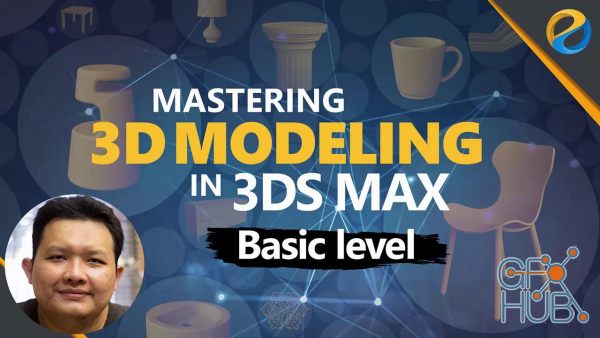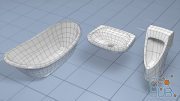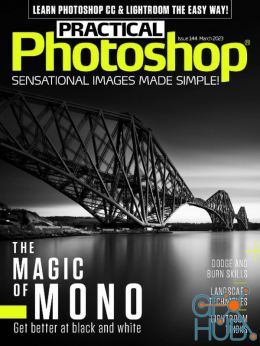Skillshare – Mastering 3D Modeling in 3ds Max: Basic Level

Skillshare – Mastering 3D Modeling in 3ds Max: Basic Level
MP4 1280x720 | Total time: 9h 03m | ENG
MP4 1280x720 | Total time: 9h 03m | ENG
In this course, you’re going to learn the essentials of using 3ds Max 2020 and then basic-to-intermediate 3D modeling skills. This course is designed for complete beginners. So no prior experience in 3D is needed to take this course. The curriculum is carefully designed so you can master 3ds Max quickly and seamlessly.
What you will learn
There are a total of 9 chapters in this course. In the first chapter, you will be introduced to the "User interface" of 3ds Max. You will learn different ways to navigate the viewport. And different ways to utilize the display settings. In the second chapter you will learn basic object operations such as how to create objects, and how to modify them once they are created. You will learn how to select objects. How to transform objects. How to use and manipulate the pivot point. More advanced transformation settings. Learn about modifiers and then finally about object duplication. In the third chapter you will learn various ways of managing your 3D scene. From basic object management. Then learning how to use the “Scene explorer”. Learn how to use and manage layers. Learn about the “selection set” and also object grouping.
Then starting at the fourth chapter, we’re going to shift our focus to 3D modeling. In this chapter, you’ll learn the power of “editable poly” modeling techniques. We’ll start with the basic modeling operations. Then move on to different sub-object selection techniques, step by step, from the basic to advanced. Next, we’ll cover important modeling concepts such as “Normal direction” and “Backface culling”. After that, you will learn edge related modeling techniques. Then learn different ways to cut and slice 3d models. Next, you’ll learn about the surface smoothing group. Learn how to close holes, and learn about the hidden technique of edge extrusion. Then, you’ll learn how to connect two structures using the "Bridge" command. And then learn even more various polygonal modeling features.
In chapter five. We’ll focus on precision modeling. We’ll start with the basics of how 3ds Max uses measurement units. Learn all the nuances of the scale operation. Learn how to reset transformation. Learn how to precisely set the dimension of an object. Learn different snapping features that 3ds Max has to offer. And then learn how to align objects using various tools. Next, in chapter six, the focus is on a modeling project. We're going to create this kitchen counter product. We'll cover from setting up the references. Then modeling the base frame. And then modeling the panels. Until we have a finished model. In all of these modeling processes we are going to use a real measurement unit.
In the next chapter, which is chapter 7. You’ll be introduced to the “spline” object type. By leveraging “spline” in your modeling process, you can create more complex shapes, quickly and easily, if compared to the pure polygonal modeling techniques. You can create the most demanding lines and curves because 3ds Max supports different types of spline vertex. In this chapter, you’ll be given exercises to strengthen your spline editing skill. You will learn how to manipulate spline objects such as adding and deleting spline vertices. And many other spline modification techniques such as “Fillet”, “Chamfer” and “Outline”. Then we’ll discuss 2D Boolean operations. And then more techniques for quickly cleaning up messy intersecting splines. After that, you’re going to start learning different techniques to convert the spline objects into 3D models. You will learn about the “extrude” modifier. Then the “lathe” modifier. And then the “Bevel profile” modifier.
In chapter 8, you will learn the basics of creating smooth organic 3D models using the subdivision techniques. We’ll cover the most important concepts around subdivision modeling. Such as when to use and when not to use non-quad polygons. Learn how to fix bad topology results from concave N-Gons. Then we will cover the modeling techniques using compound objects. Such as using the “Pro Boolean” feature. And then learn how to deform an object to follow the surface of another object using the “Conform” feature.
Download links:
mastering-3d-modeling-in-3ds-max-basic-level.part1.rar
mastering-3d-modeling-in-3ds-max-basic-level.part2.rar
mastering-3d-modeling-in-3ds-max-basic-level.part3.rar
mastering-3d-modeling-in-3ds-max-basic-level.part4.rar
mastering-3d-modeling-in-3ds-max-basic-level.part5.rar
mastering-3d-modeling-in-3ds-max-basic-level.part6.rar
mastering-3d-modeling-in-3ds-max-basic-level.part7.rar
mastering-3d-modeling-in-3ds-max-basic-level.part2.rar
mastering-3d-modeling-in-3ds-max-basic-level.part3.rar
mastering-3d-modeling-in-3ds-max-basic-level.part4.rar
mastering-3d-modeling-in-3ds-max-basic-level.part5.rar
mastering-3d-modeling-in-3ds-max-basic-level.part6.rar
mastering-3d-modeling-in-3ds-max-basic-level.part7.rar
Comments
Add comment
New Daz3D, Poser stuff
New Books, Magazines
 2020-06-27
2020-06-27

 1 626
1 626
 2
2















